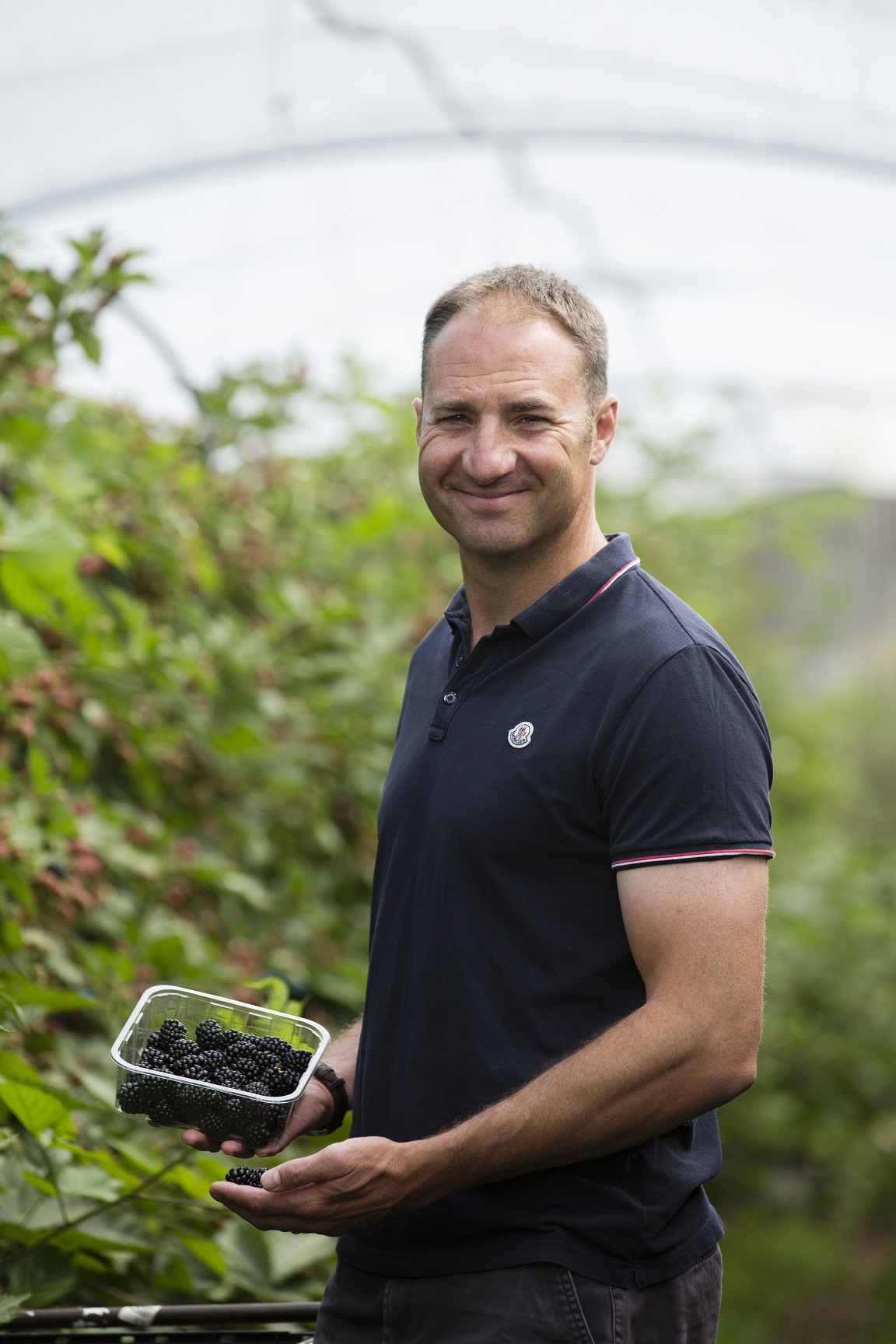ORIGIN
Released in 1979 by the Scottish Crop Research Institute (SCRI), it was formed by crossing the Aurora blackberry with a raspberry known as 626/67. The tayberry has a similar growth and fruit to the loganberry, which in turn is similar to the blackberry. As the plant patent states "this variety resembles the loganberry in some respects, but is superior to it in fruit size, yield, fruit colour, mode of fruit presentation and ease of propagation by cuttings."
Thename Tayberry comes from Scotland's main river, the Tay, on the banks of which once stood the Scottish Crop Research Institute, now The James Hutton Institute.
Derek Jennings, the well-known berry breeder who created, among other things, the Glen raspberry range, selected this hybrid with David Mason and said in summary:
TAYBERRY IS ESSENTIALLY AN IMPROVED LOGANBERRY.
Derek Jennings, tayberry breeder
Jennings recalls how the tayberry soon underwent a major development: "Growers kept writing about their experiences with the Tayberry and there was excitement in 1998 when an enthusiast from Buckinghamshire wrote to say his plants had become thornless. I took a spade and went to see him and the result was the Buckingham Tayberry, which we recorded together shortly afterwards. This is now the main form grown. Such mutations occur frequently in this type of material, but this one was not discovered until 18 years after the Tayberry was selected, whereas the thornless Loganberry was not discovered until 1929, some 49 years after the judge began supplying his friends with his new fruit."
DISSEMINATION
Being of Scottish origin, the tayberry is mainly found in the United Kingdom. Initially, it was also widely spread among hobbyists in the United States.

FEATURES
The fruits of the tayberry grow on short, strong side branches on spiny canes about 2 metres long. The tayberry fruit, like the raspberry and blackberry, is an aggregate fruit consisting of a collection of drupes. The juicy fruits are cone-shaped, deep purple in colour and up to 4 cm long.
Like a blackberry, the core remains in the berry when it is picked.
Two varieties are available:
- Buckingham Tayberry: thornless cultivar with low productivity
- Tayberry 'Medana': has large red-purple fruit, good productivity
The fruit is at its best when it has ripened to a red-purple colour. Tayberries are somewhat less acidic than loganberries, with a strong and slightly sour flavour.
The fruit is good not only for eating fresh directly from the plant, but also cooked, frozen and for making jams. Also on the market is tayberry wine, which is described as fruity, sweet and full-bodied,

PRODUCTION
The conduction and cultural requirements are similar to those for blackberries. Plants will need protection below -15°F.
The plants are very vigorous and require a strong trellis for support. Commercial yields can be attractive, up to 30 tonnes per hectare. Tayberry plants consistently produce higher yields than loganberries. It is self-fertile.
Being later flowering, there is less chance of reduced fruit set or fruit damage in cold years - particularly useful for producers in colder areas. Harvesting takes place from July to September.
Tayberries are not easily harvested by hand and cannot be picked by machine, which is why they have never become a widely grown crop.
Tayberries are an excellent crop to grow under windows as a safety barrier for the house, because the branches are particularly thorny.
In Italy, tayberry plants can be found at the main nurseries dealing with berries:
TAYBERRY ON SOCIAL MEDIA
INSIGHTS
- The origin of the tayberry
- Minor Small Fruit Crops for New Mexico Gardens
- Dedication: Derek Jennings and Hugh A. Daubeny Berry Breeders Extraordinaire
- Tayberry (Foodgeeks)
- Tayberry (Victoriana)
- Discovering tayberry, the fruit halfway between blackberries and raspberry
- Tayberry: US patent USPP4424P
- Blackberry and Hybrid Berry Final Trials Report (The Royal Horticultural Society)
All rights reserved - Italian Berry - CC BY License














